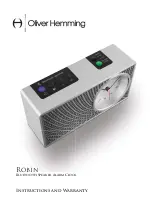
9
4.
INTERFERENCE FROM OTHER GASES, LIQUIDS, OR RFI
The methane detectors use two sensors:
i)
A catalytic combustion filament calibrated with methane. It is used up to about
the lower flammable limit (5.0% by volume) of methane.
ii)
A thermal conductivity sensor calibrated with methane. It is used from the lower
flammable limit (5.0 vol %) to 100 vol % of methane.
Models RGC-301 and RGC-311 use the sensors listed above and:
iii)
A three-electrode, electrochemical cell for carbon monoxide.
Model RGO-321 methane and oxygen detector uses the methane sensors listed above and,
iv)
A two-electrode, electrochemical cell for oxygen.
Models CGA-611/612 use the above sensors and
v)
A three-electrode, electrochemical cell for hydrogen sulfide.
Gases, or liquids with appreciable vapor pressure, which may interfere with the detection
of methane include substances which can be combusted on the catalytic combustion filament
(examples are ethane, propane, ethylene, propylene, octane, and the like) and substances which
differ in thermal conductivity from air (examples are hydrogen, helium, carbon dioxide, other
hydrocarbons).
Gases or vapors which may interfere with carbon monoxide detection include
substances which can be electrochemically oxidized or reduced on the working electrode of the
electrochemical sensor. Examples are hydrogen, hydrogen sulfide, oxides of nitrogen, alcohols,
and unsaturated hydrocarbons.
Many of the substances that interfere with CO are removed by the flue gas filter (Part No.
FF-005). This filter can be used for both flue gas measurements and for ambient air
measurements of CO whenever the ambient concentration of other oxidizable substances is
significant. This filter
must not
be used whenever H
2
S measurements are desired.
Radio Frequency Interference
The Gas-Ranger detectors have an interior coating on their cases to suppress radio
frequency interference (RFI).
WARNING:
T
he methane, CO, and H
2
S sensors use catalytically active surfaces which may be
poisoned by air contaminants. These sensors should not be exposed to
atmospheres that contain silicones, halogens and halides, such as chlorides, and
volatile compounds containing lead or antimony. If exposure to atmospheres that
adversely affect the sensors is suspected, the detector should be recalibrated
promptly.
















































